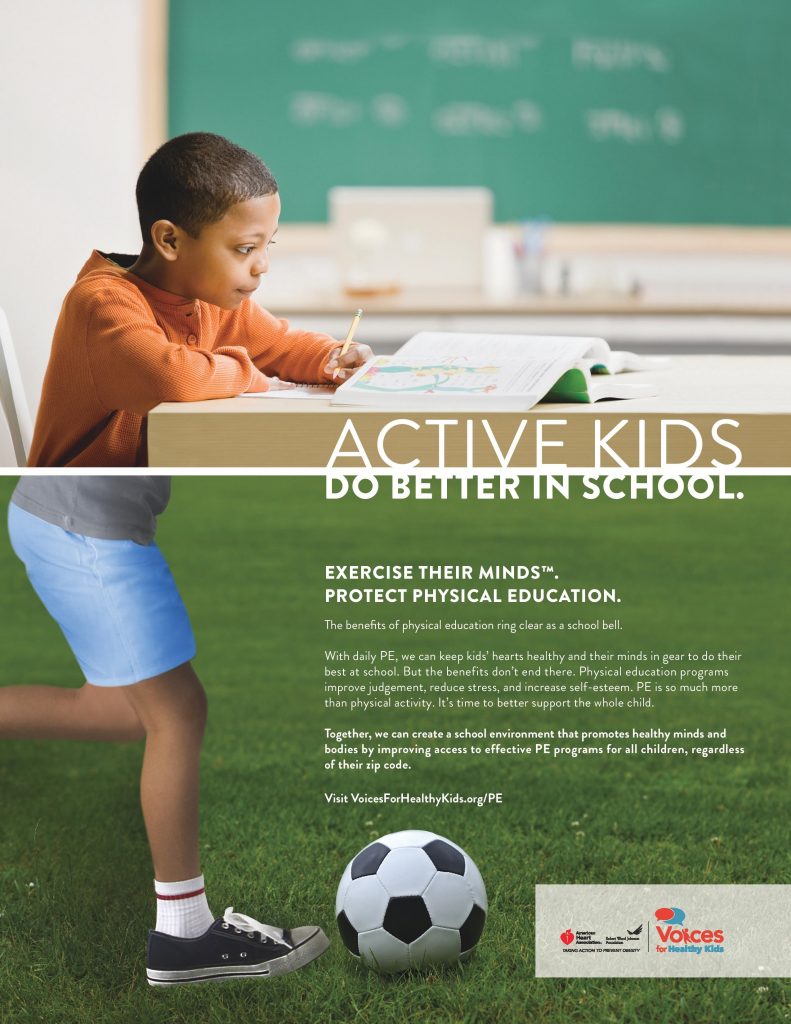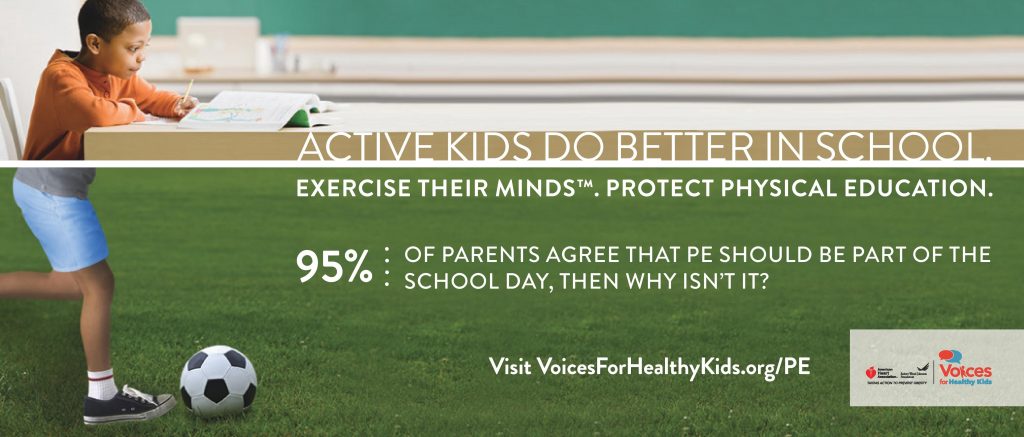Why Physical Education Is On The Top Of My Kindergarten Priority List
This post reflects a compensated editorial partnership with Voices for Healthy Kids, a joint initiative of the American Heart Association and Robert Wood Johnson Foundation.
Sesame turned 5 in March and that means Kindergarten registration is upon us. As a way to calm my nerves, I’ve started compiling a list of questions to ask when we finally meet his teacher, and while I’m sure as a fellow educator they will expect my questions to all focus on literacy and other academic pursuits, that’s actually not at the top of my list.
Nope. My top question is how much physical education is included? If I’ve learned nothing else about my child in the last five years, I’ve learned that he needs plenty of doing physical activities either indoors or outdoors. His current Pre-K program is half-day, but the kids spend at least 30 minutes outside each day. We try to follow it up with outside time at home or other physical activities like the yoga class he goes to once a week after school. The difference in his mood and ability to focus once he’s burned some energy is amazing. I know that not only is Sesame exercising his physical muscles during his time outside each day, but he’s also exercising brain muscles that help him run, ride a bike, or climb a tree. Every day when I pick him up from school, I ask him what was his favorite part of the day and he always says riding bikes outside. He’ll later mention something they did in the classroom, but being outside and moving is always his favorite activity.
I’ll admit that initially physical activity wasn’t high on my list of priorities for his education, but not only have I seen a difference in my child in the last two years, but I’ve also learned that children need 60 minutes of physical activity per day. In 2017, the Voices for Healthy Kids Initiative is working on expanding the national conversation about the need to ensure that every child receives physical education in schools. Research has shown us that physical education impacts a child physically, mentally, and emotionally because it addresses the needs of the whole child. With this research at our fingertips, you’d think that all states would include PE as a mandate. Sadly, this is not at all true. Only 4% of elementary schools, 8% of middle schools, and 2% of high schools provide daily PE or its equivalent for the entire school year. These numbers are low because of racial inequalities and socio-economic challenges that leave many schools without resources for PE. Children should not suffer simply because of where they live.
I’ll be asking my son’s new teacher about their PE options during our meeting this summer. Will you join me in making sure all children get enough PE? You can help protect PE by joining the PE Action Team.










